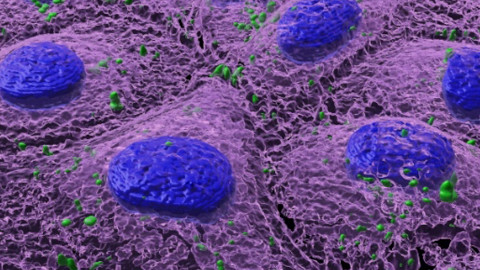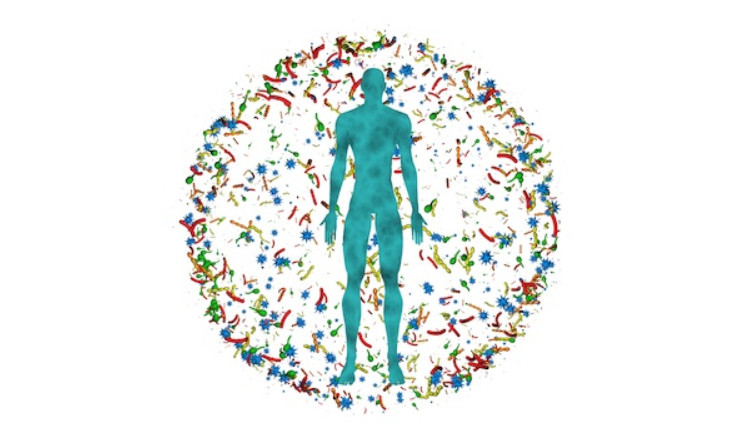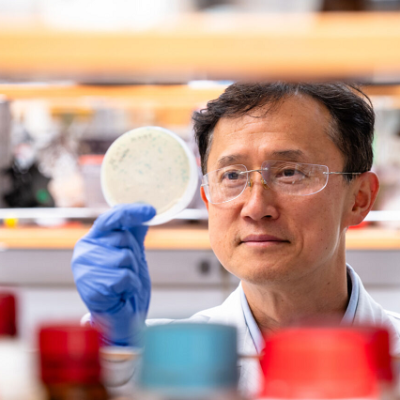A revised study led by the Universitat Autónoma de Barcelona (UAB), the CREAF and the Centre for Environmental and Marine Studies (CESAM) at the University of Aviero, Portugal, and published in the journal Science Bulletin, verifies that the nanoplastics affect the composition and diversity of our intestinal microbiom and that this can cause damage to our health.
This effect can be seen in both vertebrates and invertebrates, and has been proved in situations in which the exposure is widespread and prolonged. Additionally, with alteration of the gut microbiome come alterations in the immune, endocrine and nervous system and therefore, although not enough is known about the specific physiological mechanisms, the study alerts that stress to the gut microbiome could alter the health of humans.
The health effects of being exposed to nanoplastics was traditionally evaluated in aquatic animals such as mollusks, crustaceans and fish. Recent in vitro analyses, using cell cultures of fish and mammals, has allowed scientists to analyse the changes in gene expression associated with the presence of nanoplastics from a toxicological viewpoint.
The majority of neurological, endocrine and immunological tracts in these vertebrates are very similar to those of humans, and therefore authors warn that some of the effects observed in these models could also be applied to humans. Understanding and analysing the process through which these plastic fragments penetrate the organism and harm it is fundamental, as is determining precisely the amount and typology of nanoplastics polluting the environment.
For this reason, researchers highlight not only the need to further study the specific mechanisms and effects on human cell models, but also unify analysis methodologies in order to conduct correct measurements of the quantity of nanoplastics present in different ecosystems.
Mariana Teles, researcher at the UAB, in collaboration with other researchers such as Josep Peñuelas, CSIC lecturer at the CREAF, comments that “this article does not aim to raise the alarm, but it does seek to warn about the fact that plastic can be found in almost everything surrounding us, it does not desintegrate and we are constantly exposed to it.
At the moment, we can only speculate on the long-term effects this can have on human health, although we already have evidence in several studies describing hormonal and immune alterations in fish exposed to nanoplastics, and which could be applied to humans”.

A review study led by the UAB, the CREAF and the University of Aveiro concludes that nanoplastics change the composition and diversity of gut microbiome in vertebrates and invertebrates. The effects of a widespread and prolonged exposure to nanoplastics observed in animal models can be applied to humans.
Invasive and Toxic
The study presents the main environmental sources through which nanoplastics enter the human body and summarises how they are able to penetrate the body: by ingesting them, occasionally inhaling them, and very rarely by being in contact with human skin.
Once they are ingested, up to 90% of the plastic fragments that reach the intestine are excreted. However, one part is fragmented into nanoplastics which are capable, due to their small sixe and molecular properties, to penetrate the cells and cause harmful effects.
The study establishes that alterations in food absorption have been described, as well as inflammatory reactions in the intestinal walls, changes in the composition and functioning of the gut microbiome, effects on the body’s metabolism and ability to produce, and lastly, alterations in immune responses. The article alerts about the possibility of a long-term exposure to plastic, accumulated throughout generations, could give way to unpredictable changes even in the very genome, as has been observed in some animal models.
The team in which Mariana Teles (Evolutive Immunology Group, IBB-UAB) is member also recently published a second article analysing the effects of nanoplastics in fish. The study, which is the result of Irene Brandts’ PhD thesis directed by Nerea Roher, was published in Environmental Science: Nano and analyses the consequences of being exposed to nanoplastics to the immune system of a zebrafish (a small tropical fish widely used as a model organism for research).
The scientists conclude that the nanoplastics can accumulate both in the cells and in the embryos of the zebrafish, additionally causing changes in the levels of genes relevant to the correct functioning of the animal’s immune system. Despite this fact, the capacity of zebrafish embryos to survive a bacterial infection was not affected by the exposure to nanoplastics.
The team of researchers nonetheless defend the need to continue research in this field, given that the presence of microplastics and nanoplastics in our ecosystems is an extremely crucial environmental issue which needs answers in order to understand how far-reaching any possible consequences may be.
Responsible usage
The review study acknowledges that different techniques are being tested to eliminate nanoplastics from the water, such as filtration, centrifugation and flocculation of wastewater, and the treatement of rainwater. Although the results are promising, they are limited to treating larger particles of plastics, and therefore until date no effective solution has been found for the elimination of nanoplastics from the environment.
“To solve this problem of plastic pollution, human routines must change and policies should be based on informed decisions on the known risks and available alternatives. Individual actions such as the use of more environmentally-friendly products and an increase in recycling indexes are important”, Mariana Teles comments.
“The authorities can promote these pro-environmental actions through economic stimuli, such as tax benefits for reusing plastic as industrial raw material, as well as bottle deposit schemes for consumers”, researchers recommend.
Read the original article on Universitat Autònoma de Barcelona.







